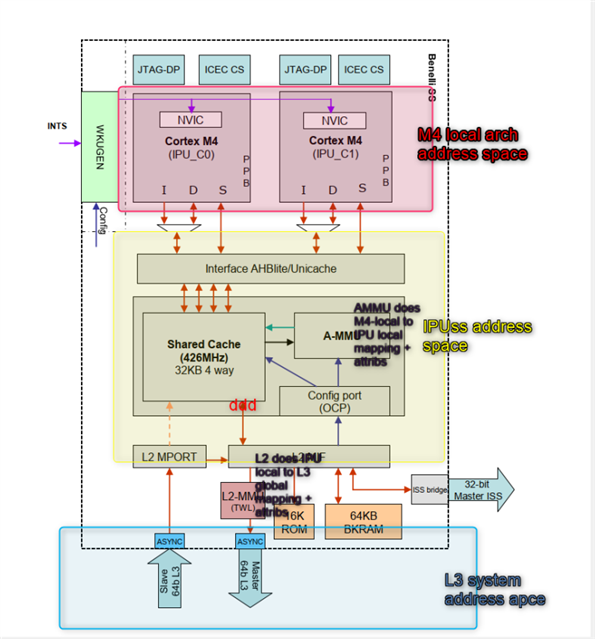Hi,
My customer has some questions about the specification of “AMMU-UNICACHE” of Dual Cortex-M4 IPU Subsystem on AM5706.
Q1) Could you tell them what “BYPASS-bit” of IPUx_UNICACHE_CFG Register means ?
The Register manual describes as “0x0: Everything is non-cacheable./0x1: Everything is cacheable.”. Does it mean that the IPU cache will not be enabled unless this bit is set ON ?
(Referring to the page 1748 in AM571x and AM570x TRM)
Q2) When “BYPASS-bit is set ON, memory access to the spaces other than those registered in AMMU is disabled.
They confirmed below.
- Accessing by program code => BusFault occurred
- Memory dump by ICE => Read impossible.
Is this operation the specification of this device ? If so, could you tell them any workaround ?
Also, they have confirmed that the area other than the AMMU registration space as well can be accessed when “BYPASS-bit” is set OFF.
< Information >
AM5706
CCS v8
TI v18.1.2.LTS
HW AM5706 Custom Board
SW pdk_am57xx_1_0_11
bios_6_76_00_08
XDCTools 3.50.3.33
ICE Lauterbach
Thanks and regards,
Hideaki


